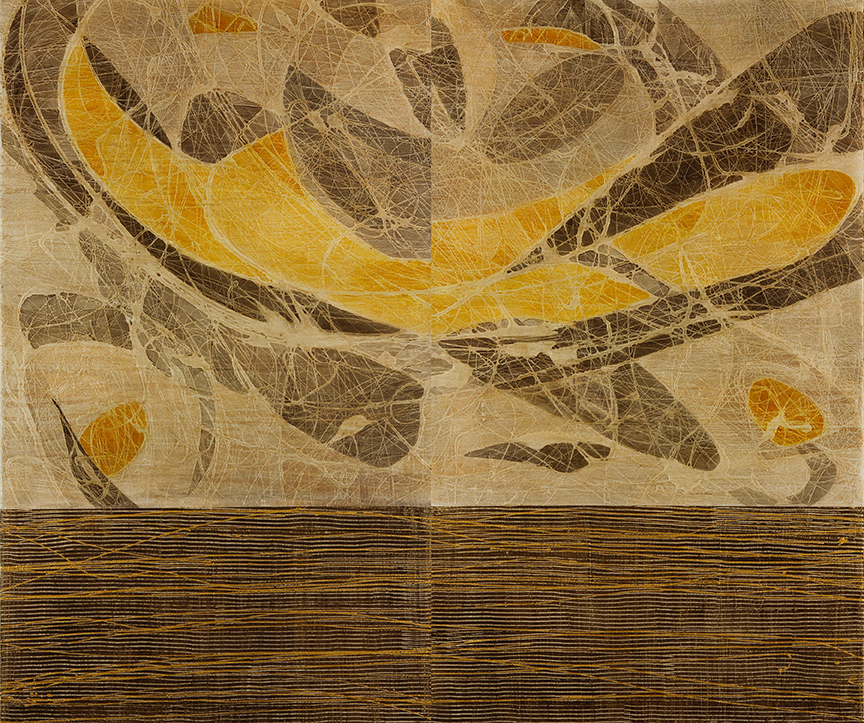Fluid, High Flow or Heavy Body, what’s your favorite?
Tesia Blackburn “Esultanza” Acrylic on Canvas 60” x 72.” This painting was created by laying down a surface of Fiber Paste and Clear Tar Gel and using Fluids and High Flows on top.
Fluid, High Flow or Heavy Body, what’s your favorite?
When I was a little kid, I loved to help my dad work on the car. He would send me into the garage to get a monkey wrench. I'd come back with a screwdriver or maybe a hammer. I was only five or six, after all. He would give me a lopsided grin and say "Baby, you need the right tool for the right job."
I often pass along this advice to my students when they are thinking about what kind of paint to use for a particular painting. No, they don't need a monkey wrench - they need the right viscosity of paint.
Here's a brief overview of three different thicknesses of paint - the viscosities - and what they do best.
Of course, I'm talking about Golden Artist Colors' products because that's what I know and use. These comments can be applied to just about any brand that has similar paint consistencies.
Check out the free download at the bottom of this article with a cool technique you can use with High Flow and Fiber Paste!
Heavy Body as the name implies, is thick and well suited to impasto work. It has the thickness of peanut butter. Use this type of paint if you want heavy brushstrokes and texture. On the other hand, if you only want to cover the background of a canvas or do a quick underpainting, then Heavy Body is not the paint I would choose. It takes some elbow grease to get that color down into the weave of the canvas. It's time-consuming and hard work.
Fluid Paint has a lighter consistency, more like heavy cream, and shows less of a brushstroke. Perfect for underpainting and especially great for covering large areas of canvas without a lot of work. Also, Fluid Paint is excellent for watercolor-like painting. Use Fluid Paint with water on an absorbent surface like Fiber Paste, and you have a match made in heaven. Gorgeous color that doesn't lift like watercolor. Layer upon layer of translucent washes without making mud because the paint dries and doesn't lift.
High Flow paint is even thinner than Fluid Paint. It has an ink-like consistency but it's paint, so it doesn't have any of the drawbacks that ink might have when mixed with acrylic. With a couple of exceptions such as the phosphorescent and fluorescent, the High Flow paints, just like the Heavy Body and Fluids are lightfast. Not all inks can make that claim. Just like the Fluids, the High Flow paints can be thinned with water and used on an absorbent surface to create beautiful watercolor-like blooms, runs and puddles. High Flow can also be used in calligraphy pens and airbrushes.
Speaking of water and absorbent surfaces, some of my favorite paintings have been created with a lot of water and High Flow and/or Fluid paint. As long as you have an absorbent surface you can use as much water as you like. Some of my favorites are Fiber Paste, Light Molding Paste and Coarse Molding Paste.
These different types of paint all lend themselves to different types of techniques. From thin transparent washes to thick, textural impasto, acrylic paint offers a million ways to create.
What's your favorite?
Here’s a technique I think you’ll love. Download the how-to tips here.

